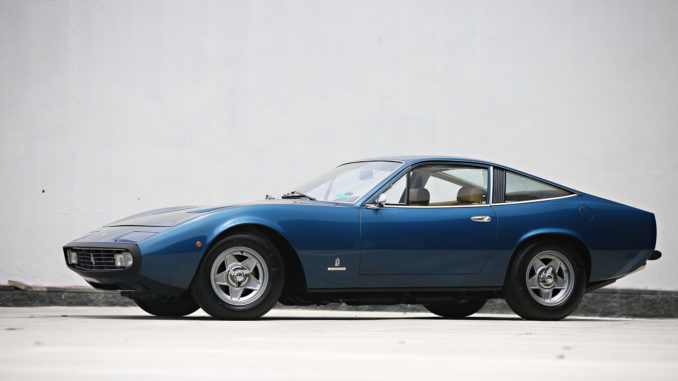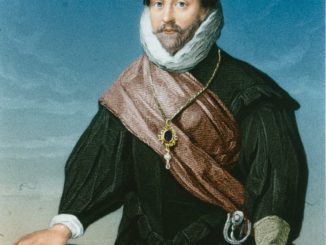
I was scrolling through the brochures to see if I missed anything interesting. Ford doesn’t seem to have many interesting vehicles sadly. Then I came across the EXP. It looks like a weird combination of the Mustang and the RX-7. Apparently this vehicle was a “sports compact” and it ran from 1982 to 1988. It shared wheelbase and powertrain with the Ford Escort, the EXP was longer, lower and more aerodynamic than its five seat counterpart.
In line with the first generation Escort, the EXP was produced in a version from 1982 to 1985, undergoing a facelift during the 1985 model year. The model was dropped after the 1988 model year. Although, not intended to replace the EXP (as it was originally designed to become the 1989 Ford Mustang), the 1989 Ford Probe would become the next front wheel drive sports coupe sold by Ford. It was also called the Mercury LN7.
The Mercury LN7 was also front wheel drive. Almost like a front wheel drive Fiat X1/9. Wait, could it be? 9 plus 3 is 12 minus 2 is 10. Front wheel drive is 2 wheel drive. There are three letters in “EXP”.
There are four letters in Ford, 10 minus 4 is 6. There are 8 letters in “Bentley”; they dropped the EXP after the 88th model year. The Bentley EXP 10 Speed 6 won a design award at Villa D’Este on May 26th. The Continental has a W12 engine.
The ’89 Mustang was initially going to be a redesigned EXP. The EXP had 3 models which were Standard, Luxury and Turbo. The Mercury LN7 Had 10 slits in the grill, compared to the EXP’s 2. I thought so, Ford and Bentley are illuminati confirmed…
But in all seriousness, it was a pretty peppy car with 120 hp from a 1.6 liter turbocharged engine with the turbo coupe. It was (like many cars on this list) very light. It only weighed 2,047 pounds.
But like Chrysler, there was much more to come…
Manufacturer: Chevrolet
So, we have the most obvious car here. (Outside of the Vette), this has to be here. While this is stretching what I said earlier, it also isn’t because this is the IROC-Z28. This is the interesting one.
It’s much heavier than the Mustang, ranging from 3,086 to 3,362. Much like the Mustang, it had a plethora of engines. Here is the list of engines.
1982-1985: 2.5 L LQ8 / LQ9 Iron Duke I4
1982-1984: 2.8 L LC1 V6
1985-1989: 2.8 L LB8 V6
1990-1992: 3.1 L LH0 V6
1982-1983: 5.0 L LU5 Small-Block V8
1982-1987: 5.0 L LG4 Small-Block V8
1983-1986: 5.0 L L69 Small-Block V8
1988-1992: 5.0 L LO3 Small-Block V8
1985-1992: 5.0 L LB9 Small-Block V8
1987-1992: 5.7 L L98 Small-Block V8
Much like the Mustang, it had quite a few transmissions as well. Either a 4 or 5 speed manual or a 3 to 4 speed automatic. Like the Mustang, you could get a convertible or coupe variant. But there was no fastback. The new Camaro received positive reviews for its styling and handling but was also criticized for the low power ratings for the Camaro Z28.
But this isn’t the vehicle that caught my eye, nope.
it’s a Chevrolet Citation. I know, I know!!! You don’t like the Citation, this one’s different however. It’s the X-11, the sporty one.
With the performance enhanced Citation X-11, Chevrolet wanted to remind the car buying public this front wheel drive newcomer was made by the same people as the Corvette and Camaro. They even went to race it in the SCCA! “The SCCA classified the X-11 in Showroom Stock B class. In 1981, the X-11 got itself to SSB National Championships in 1982 and 1984. Impressive right?
You could get it with either a 4 speed manual or a 3 speed automatic. You also got sport type suspension, Goodyear P205/70R-13 white lettered tires with rally rim trim and a rear spoiler.
You could also get the Pontiac 2.5-liter 4 cyl Iron Duke or the optional Chevrolet 2-bbl LE2 2.8-liter V6 engine that produced 115 hp (86 kW). Later in its life, the Citation X-11 got a handling upgrade as well.
This is the fourth gen Monte Carlo, the SS weighing in at 3,239. This weight makes it lighter than the heaviest Camaro, but not by much. This had many engines, so many so I can’t be bothered to list them XD. Interestingly enough in 1985, they resurrected the option for a T–Top. I guess T–Tops were a 80’s thing? It also had P205/70R-14 Goodyear Eagle GT tires.
For 1986, there were four distinct body styles available. The base model Sport Coupe was still available with the same general body panels that it had since 1981, but featured new “aero” side mirrors similar to those on Camaros and Chevrolet Corvette of the 1980’s.
Sadly, the later generations of the Monte Carlo got worse and ending up being just an Impala Coupe in 2006.
GMC had something up its sleeves though…
Manufacturer: GMC
The Syclone! That’s right! Did you think I was going to let this one slide? Nope! This was a competitor to the Shelby Dakota shown earlier on.
Both the Syclone and Typhoon trucks featured a Mitsubishi sourced turbocharger and Garrett intercooler. They were attached to a V6 engine with unique pistons, head gaskets, intake manifolds and exhaust manifolds. All Syclones and Typhoons had a 4-speed automatic transmission. With a rear wheel bias (aka power distribution). Both trucks featured sport modifications to the standard suspensions. The Syclone was the first production truck to receive a 4-wheel anti-lock braking system. Output was 280 hp and 350 lb∙ft. The Syclone (when new) was capable of accelerating from 0 – 60 mph in 5.3 seconds and could do a quarter mile run in 14.1 seconds at 93 mph.
This was a hot little pickup. While it was born after the 80’s, it still had the 80’s spirit coursing through its veins.
Manufacturer: Pontiac
Ah the Fiero. Some would say it’s the “poor man’s Ferrari”. Others would go as far as saying it’s the “poor man’s MR2”. Whatever you think of it, this was an oddball. The Fiero was conceived as a small, two-seater sports car with all new suspension and V6 engine. While General Motors management and accountants were opposed to investing in a second two-seater sports car that might compete with the Corvette, they perceived the oil crisis as a market opportunity for a fuel efficient sporty commuter car.
To this end, the Fiero was re-designed to use a fuel efficient version of GM’s 2.5 L four cylinder,”Iron Duke” engine capable of 27 mpg-US in the city and 40 mpg-US on the highway with the economy ratio transmission option.
Sadly, the Fiero isn’t the fastest of all the small cars. But the owners are some of the most loyal that you can come across. This makes it a diamond in the rough.
No, this isn’t the “Smokey and the Bandit” generation of Trans Am. But it’s still an interesting vehicle nonetheless. If anything, this is actually cooler than its Camaro twin.
The 3rd Generation of Firebirds consisted of three models: Firebird, Firebird S/E, and Firebird Trans Am. The Firebird was the base model equivalent to the Camaro Sport Coupe; the Firebird S/E was the luxury version; and the Trans Am, the high performance version. Though, it was a heavy car compared to other vehicles in this article, weighing in at 3,170 pounds. This generation of Firebird and Camaro were slower when compared to their heritage; they weren’t all bad either.
Manufacturer: AMC
Yep, while the Gremlin died 2 years before the birth of the 80’s, it had its spirit. In its final year of 1978, the Gremlin received a number of changes, but customers on a tighter budget could still get a standard six cylinder base model Gremlin for under $3,400.
At mid–season, a GT package became available with a front spoiler and flared wheel openings as on the 1978 AMX. The GT added an aluminum overlay to the instrument panel which was powered by the 258 cu in (4.2 L) I6 as standard, and had its own stripe scheme: a wide tape stripe, outlined by a narrow one, ran back from the front fenders and widened aft of the rear quarter windows.
While a lot of people hate this car, it’s actually pretty good. And nowadays is a collectible.
This did the Subaru thing did before Subaru! AMC predated them by 17 years… Let that sink in…
This was the original Subaru 22B. The AMC Eagle was versatile, decently quick, interesting and very very cool. This is giving me the impression of a factory Road kill car. Now (thankfully) this came with an understandable amount of engines. Here is the list.
150 cu in (2.5 L) AMC I4
151 cu in (2.5 L) GM Iron Duke I4
258 cu in (4.2 L) AMC I6
219 cu in (3.6 L) VM I6 turbo diesel
You could choose between a 4 speed or 5 speed manual. You could get a 3 speed automatic… But it was for the turbo diesel only.
For 1981, AMC launched the Eagle SX/4 and Kammback; these were both 4×4 versions of the AMC Spirit. The Spirit itself was a revised AMC Gremlin with larger rear quarter windows. SX/4 being smaller than the Concord based Eagles, weighed in at 3,033 lb – around 230 lb less – and got better mileage with the automatic. Griffith made a limited number of Eagle and Concord “Sundancer” convertibles, with fixed Targa band, removable T-tops and droppable canvas rear top.
For 1982, Eagles could be switched from four wheel drive to rear wheel drive with “Select Drive.” This was a less sophisticated system, but less expensive as well. Drivers had to stop the car to shift, but did not have to leave the car to use the “fingertip control” lever. It retained the controlled slip differential and allowed for somewhat higher gas mileage in rear wheel drive mode.
Much like many of the other cars on this list, they went racing with it. Gene and Gary Henderson raced an Eagle SX/4 (née Spirit) in the SCCA Pro Rally. Sadly, after the Eagle (and very much the Eagle SX/4), AMC was killed.
Now, we’re going to get into the 80’s people remember. Stuff like the Dodge Mirada, Aries K, Celebrity, Cavalier and so on and so forth.
Disclaimer I’m not saying I don’t like these cars, but these are some of the cars people mock and generally say are the reason as to why the 80’s were awful.
Also, there are two cars per manufacturer, because it’s harder to tell people the 80’s were good than bad. Without further delay, let’s get into it.
Manufacturer: Dodge
Ah the Diplomat, with its interesting diplomacy it handled the 80’s in a classy way such as strolling through the streets in a suit with a top hat. Starting with the 1977 model year, the Diplomat became a full model line, rather than as the name of a particular body style. It was a longer, fancier up¬market version of the F-body Aspen. The chassis and mechanical components are identical, and doors and various other body panels are interchangeable. It also had three engines, 225 cu in (3.7 L) Slant 6 I6, 318 cu in (5.2 L) LA V8 and 360 cu in (5.9 L) LA V8 and many transmissions.
4 – speed A833 manual
3 – speed A727 automatic
3 – speed A904 automatic
3 – speed A999 automatic
Sadly, people only see this as a granddads car.
The Aries, a car that gets more hate then it really deserves. The Reliant replaced the Plymouth Volaré/Road Runner. The Aries replaced the Dodge Aspen. Though similar in exterior size to a compact car, the Reliant’s interior volume and six passenger seating gave it a mid¬size designation from the EPA. That’s pretty good for a small car.
The Reliant and the Aries sold 150,000 units in 1981. Like a lot of 80’s Dodges, it was very light. It was only 2,300 pounds. By comparison, the Lotus Evora weighs 3,049 pounds… Do you need some time?
You need another comparison? NB Miata. 2,348 pounds.
Sinking in… Still sinking in… And yet, even with this. People still mock this vehicle.
Manufacturer: Ford
The Pinto which is known for an explosive rear end has been called “the most dangerous car in the world”. My grandmother even had this car. Does that make it a bad car? No, why? If that made it the most dangerous car in the world, we would’ve included the Ferrari 458 Italia (for similar reasons). We would have included Pagani. I could go on. But you get the point.
Much like the Chevette, this car was light weighing 2,015-2,270 lbs. It was also related to the Mustang II. It’s a shame we don’t see these racing around Laguna Seca.
The Ford LTD Crown Victoria – In 1979, the Crown Victoria name was revived by Ford (from the original 1955-56 top of the range Fairlane coupe) for the upper level trim package on the Ford LTD replacing the LTD Landau. These cars had a Targa like chrome band across the roof usually paired with a Landau vinyl roof. While the chrome band was unique to the LTD Crown Victoria, the vinyl roof was a common option on its Lincoln Mercury counterparts, the Mercury Grand Marquis and Lincoln Town Car. The car was available in Coupe, Sedan, and Station Wagon body styles through 1987. This (unlike many vehicles) only got two engines and one transmission.
Both of the engines were V8s and you could only get a 4 speed automatic. While these are still used, they are only used as commuters.
Manufacturer: Chevrolet
The Chevrolet Celebrity, while I did make a disclaimer earlier. I do not like this car, but instead of hating on it, I’m going to give you some information. The Chevrolet Celebrity was based on the front wheel drive A-body platform shared with the Buick Century, Oldsmobile Cutlass Ciera and the Pontiac 6000.
GM had previously used the “Celebrity” name as a body style designation on pillared Oldsmobile Sedans in the 1960s. This vehicle was also front wheel drive and mostly has V6 engines with one being an I4. It even had a Eurosport Variant. No one gives this car a second lease on life.
The Chevette, a far cry from the actual Vette. Not to be mistaken for a Pet. Though nothing to Fret, as it’s not a Vette. (like that? I thought it was pretty good.)
The Chevette is a light car weighing only 2,035lbs. It had three engines, though all of them were four cylinders. The Chevette itself was initially available only as a two door hatchback with a 1.4 L OHV or 1.6 LOHC gasoline inline four engine. Engines produced from 53 to 60 horsepower driving the rear wheels. A four speed manual transmission was standard while a three speed automatic transmission was optional.
Along with the others though. This is the subject of ridicule.
Manufacturer: Buick
The Buick Electra, no! It’s not an electric car. (Though you’d be forgiven thinking so given the name). The Electra you see here is the sixth generation. This car only came with three V6 engines and a 4 speed automatic.
Unlike a lot of cars on this article though, it’s not light. It weights between 3,300-3,600 pounds. Ouch! You could also get a coupe though. The long running Electra name was dropped from Buick’s lineup at the end of the 1990 model year.
Starting in 1991, “Park Avenue” became a distinct model instead of a trim designation as it had been in the past. Still, not a terrible car though.
The Buick Century, the car that didn’t last for even half a century. This car only had V6s except for two I4’s. It came in coupe, sedan and wagon body styles. It had two 4 speed automatic transmissions and a 3 speed automatic. The Century received a facelift for 1989. It changed the body a bit. It was given a more rounded roof line but nothing drastic.
I think it would be pretty interesting to see this upgraded and then used as taxis. (Given the fact a lot of 80’s cars have a plush ride).
Manufacturer: Chrysler
The 5th Avenue, the car with class, style and I disliked it. “That car is such a granddads car”. You also got two engines – A 5.2 L LA V8, it also had a 225 cu in (3.7 L) I6. It also had two 3 speed automatics. This would also make an interesting Taxi vehicle or maybe an Uber vehicle. Either way, this vehicle has a lot of potential.
The Fifth Avenue far outsold its Dodge Diplomat and Plymouth Grand Fury siblings, with a much greater proportion of sales going to private customers despite its higher price tag. Production peaked at 118,000 cars for 1986 and the Fifth Avenue stood out in a by now K-¬car dominated lineup as Chrysler’s lone concession to traditional RWD American sedans.
Although it takes a trained eye to catch changes in the M-body Fifth Avenue, there were a few during its six year run.
Yes, Chrysler did an E-Class which is not to be confused with the Mercedes version.
Though Chrysler’s E-Class is a luxury vehicle. When I was researched and discovered in Wikipedia it stated it was related to the Dodge 600. You may be wondering “what’s so interesting about that?”
Look at the E–Class. It looks like a more luxurious Lancer. Apparently, it’s an E–body. Whereas the Lancer is an H–body. An interesting little fact isn’t it? The Chrysler E–Class was a midsize car. Introduced in 1983 on a stretched version of the Chrysler K platform, the E-Class was a less expensive, less equipped version of the similar 1983 New Yorker.
It was targeted at those who wanted Chrysler luxury at a more affordable price than the flagship New Yorker. Due to this reason, the E-Class is the replacement for the 1981 Newport which previously was Chrysler’s cheaper and more basic version of the New Yorker.
The E-Class was originally to be called the “Grand LeBaron”. However Chrysler decided to name it “E-Class” in reference to the new E-platform.
Ironically, it looks like the Chrysler LeBaron GTS. (The LeBaron is actually based off the Lancer). I guess Chrysler did get the LeBaron name on a Sedan. Either way, this would be forgotten. Never to have its potential actually used.
Manufacturer: Lincoln
Up next is the Lincoln Continental Mark VII. Long name right? Pretty good looking car! However, it’s not a light vehicle weighing in at 3,748 pounds.
To put that into perspective, a Challenger V6 weighs just less than 4,000 pounds. Anyway, this vehicle had two engines – an A 4.9cc (302 cu in) Windsor V8 and a 2.4cc (149 cu in) BMW M21 TD I6. (I find that I6 to be interesting). It also (unsurprisingly) had two 4 speed automatics.
The Continental Mark VII, later shortened to just Mark VII, is a rear wheel drive luxury coupe that was produced by Lincoln. Introduced in August 1983 for the 1984 model year, the Continental Mark VII shared its platform with the Ford Thunderbird, Mercury Cougar, and Lincoln Continental (the Ford Fox platform from the code name of the first program using the platform).
Can I just add, some of the vehicles in this list went through more than 3 factories… Talk about a waste of taxpayer dollars. Aside from that though, we will never see a modified version made into the perfect cruiser.
Our second in this brand is Lincoln Versailles another long name and also a long car. The Lincoln Versailles is a compact luxury car that was marketed by the Lincoln division of Ford Motor Company. A re¬badged variant of the Mercury Monarch and Ford Granada, the Lincoln Versailles was sold from the 1977 to the 1980 model years.
It’s also heavy.. quite heavy, weighing in at 3,827-3,915 pounds.
During the mid¬ 1970s, the Lincoln division of Ford sought to expand its model range for multiple reasons. In comparison to the four distinct luxury model lines offered by Cadillac and the three offered by Chrysler (including Imperial), Lincoln offered only two distinct model lines in 1975.
While sales of large luxury cars went on to rebound after the 1973 oil crisis, its impact lead to the rise of imported cars. While it may not have done terribly well then, it could have potential now.
You’re probably wondering what my point is in all this. I’m going to explain and stop torturing you with history…
You see. 80’s cars (as I said at the distant beginning) either are hated or dissed upon. Most of the time, not for good reasons such as ‘It’s Wrong Wheel Drive” or “They are ugly square boxes”, anything of that sort. Nor does anyone see the Potential they hold.
Look at the Buick Electra, cut the rear portion of the roof off, open up the trunk and you have yourself a Ute. Just think about it, a Cobalt SS powered Buick Electra Ute. Or even an LS powered Electra Ute or a Dodge Shadow race car that isn’t used for banger racing.
The opportunities these cars present is more than you’d think. Have any of you seen Pizza Hut’s new delivery car? It’s a Chevrolet spark with an oven in it. That could’ve been a comfortable Lincoln Versailles with an oven in the back. This car is chilling down the street without a gangsta style lowrider.
Just riding in style while delivering pizzas and more pizzas then the Spark could handle at that.
Or take the Chevette and turn it into the perfect practice vehicle for stunts. 80’s American cars aren’t awful. They’re a canvas for the imagination to run wild with. It doesn’t take much to turn these forgotten beasts into something amazing.
So please, stop the hate and use your imagination to make them whatever you want. A rally car, a taxi you name it!
Proudly WWW.PONIREVO.COM
by Cody Wagner



